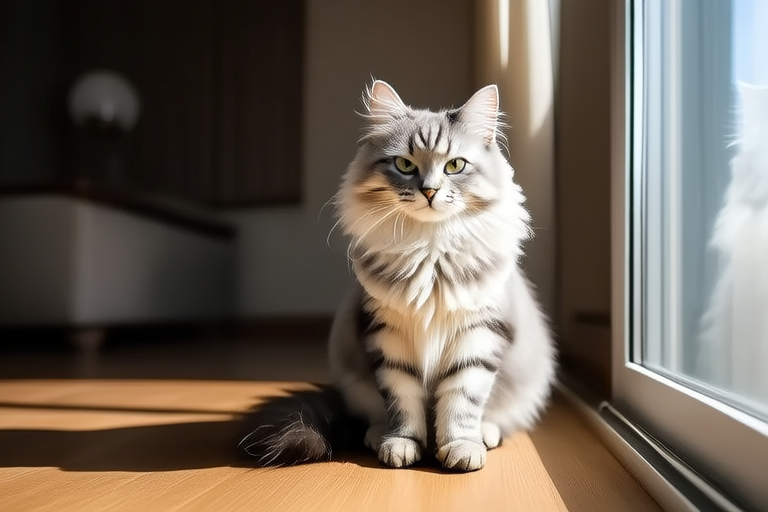Living with a Turkish Angora: Tips for First-Time Owners
Welcome to the world of Turkish Angoras! These elegant, intelligent cats have captured the hearts of many cat enthusiasts worldwide. Originating from Turkey, these felines are known for their striking appearance, playful nature, and unique traits. As a first-time owner, you might be curious about how best to care for your new companion. This guide will provide you with essential tips to ensure your Turkish Angora lives a happy and healthy life.
The Origins and Unique Traits of Turkish Angoras
Turkish Angoras are one of the oldest natural breeds of cat, with a history that dates back thousands of years. They are named after Ankara (formerly known as Angora), a city in central Turkey. These cats are known for their long, silky coats, which come in a variety of colors, including white, black, red, and blue. Their most distinctive feature is their semi-longhaired coat that lies close to their bodies, giving them a sleek appearance.
In addition to their beautiful coats, Turkish Angoras are recognized for their large, expressive eyes, which can be blue, green, or amber. Their almond-shaped eyes give them an alert and intelligent look. Another unique trait is their agility and athleticism; they are excellent jumpers and climbers, making them perfect companions for homes with high ceilings or multi-story living spaces.
Essential Care Tips
Caring for a Turkish Angora requires attention to their specific needs, particularly regarding grooming and dietary requirements. Here are some key points to consider:
Grooming Requirements
Due to their long, luxurious coats, Turkish Angoras require regular grooming to keep their fur healthy and free from mats. Brushing your cat at least three times a week can help remove loose hair and prevent tangles. Use a slicker brush to smooth out any knots and a comb to reach the undercoat. Additionally, it’s important to check your cat’s skin for any signs of irritation or infection.
Dietary Needs
Feeding your Turkish Angora a balanced diet is crucial for maintaining their health. High-quality cat food that contains protein from sources like chicken, fish, or turkey is recommended. Avoid feeding your cat human food, as it can lead to obesity and other health issues. Always provide fresh water and monitor your cat’s weight to ensure they stay within a healthy range.
Common Health Issues
Like all breeds, Turkish Angoras can be prone to certain health problems. Regular veterinary check-ups can help catch potential issues early. Some common health concerns include:
- Hypertrophic cardiomyopathy: A heart condition that affects many purebred cats.
- Ocular diseases: Due to their large eyes, Turkish Angoras may be susceptible to eye infections or glaucoma.
- Hypothyroidism: An endocrine disorder that can cause weight gain and lethargy.
Training, Socializing, and Bonding
Training your Turkish Angora can be both fun and rewarding. While they are generally independent cats, they enjoy interactive play and can be trained to respond to commands or tricks. Use positive reinforcement techniques, such as treats and praise, to encourage desired behaviors.
Socializing your cat is equally important. Turkish Angoras are typically friendly and get along well with other pets and children. Introduce them to different environments gradually to help them feel comfortable in various settings. Spend quality time with your cat daily to strengthen your bond. Playing with toys, providing scratching posts, and creating safe spaces for rest and relaxation are great ways to engage with your pet.
Activity Levels and Ideal Living Conditions
Turkish Angoras are active and playful cats that enjoy exploring their surroundings. They are agile and love climbing, so providing them with vertical spaces like shelves or cat trees can satisfy their need for height. Ensure your home has secure windows and doors to prevent accidents. If you live in an apartment, consider providing toys that encourage physical activity, such as puzzle feeders or interactive laser pointers.
These cats thrive in environments where they can express themselves freely. They are adaptable to different living situations but prefer spacious areas that allow them to move around comfortably. Providing hiding spots, cozy beds, and plenty of stimulation can help your Turkish Angora feel secure and content.
Finding a Reputable Breeder or Adopting from a Shelter
If you’re considering adding a Turkish Angora to your family, it’s important to choose a reputable breeder or adopt from a shelter. Reputable breeders prioritize the health and well-being of their cats, ensuring they are raised in clean, loving environments. When adopting from a shelter, you’re giving a deserving cat a second chance at a happy life.
When selecting a breeder, ask about the lineage of the cats, health screenings, and any available documentation. Visit the breeding facility if possible to meet the parents and observe the living conditions. For those interested in adoption, shelters often have a wide variety of cats waiting for loving homes. Adoption fees usually cover initial vaccinations and spaying/neutering.
Conclusion
Raising a Turkish Angora can be a rewarding experience for first-time owners. By understanding their unique traits, providing proper care, and fostering a strong bond, you can ensure your cat leads a fulfilling life. Remember to consult with veterinarians regularly and seek professional advice when necessary. With patience, love, and dedication, you’ll create a joyful partnership with your Turkish Angora.
